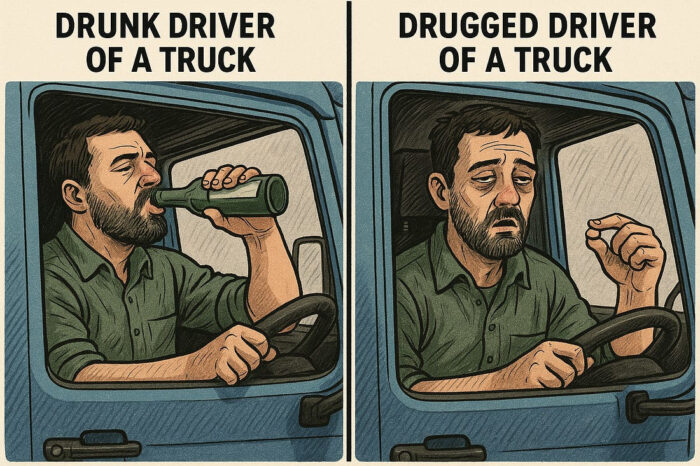 Courts have rightly called drunken driving a “grave menace to public safety.” Breath analyzers have made it possible to catch drunk drivers on the spot, and awareness campaigns have highlighted the dangers of alcohol behind the wheel. But there is another menace on our highways — just as deadly, yet far more invisible: drivers under the influence of drugs like opium, heroin, cannabis, or synthetic stimulants.
Courts have rightly called drunken driving a “grave menace to public safety.” Breath analyzers have made it possible to catch drunk drivers on the spot, and awareness campaigns have highlighted the dangers of alcohol behind the wheel. But there is another menace on our highways — just as deadly, yet far more invisible: drivers under the influence of drugs like opium, heroin, cannabis, or synthetic stimulants.
Truck drivers, in particular, are at high risk. Long hours, sleepless nights, and pressure to deliver goods on time often push them towards drugs that claim to keep them awake. But the effect is disastrous. These substances blur vision, slow reflexes, and make drivers reckless. A 40-ton truck driven by someone high on narcotics is nothing less than a missile on wheels — capable of wiping out entire families in seconds.
The law does cover this. The Motor Vehicles Act makes drugged driving a punishable offence, and the NDPS Act bans narcotics use. Yet, unlike alcohol, there is no routine, practical way for police to check a driver for drugs on the roadside. The result? Thousands of drug-impaired drivers slip past checkpoints every single day.

Is former Member of Punjab Public Service Commission
A farmer and keen observer of current affairs
But technology exists. Around the world, police forces use oral-fluid (saliva) testing kits that detect opiates, cannabis, amphetamines, cocaine and more in just minutes. These devices are small, portable, and already in use in countries from the U.S. to Australia. Even some Indian states like Goa have tested them. But without a national plan, enforcement remains patchy and weak.
India cannot afford to wait. We need immediate steps:
Equip traffic police with roadside drug-testing kits, just like breath analyzers.
Train officers to recognize drug impairment and follow due legal process.
Mandate testing for commercial drivers — trucks, buses, school vans — before jobs, during random checks, and after serious accidents.
Ensure fairness with confirmatory lab tests, but make refusal to undergo screening a punishable offence.
This is not about harassment — it is about saving lives. A driver may believe a pill or a dose of opium will help him work longer, but in reality it turns his vehicle into a weapon of mass destruction.
Yes, drunken driving is a grave menace. But drugged driving is the silent menace India is ignoring — and it is costing innocent lives every day.